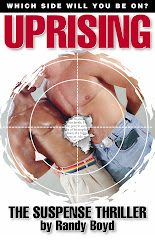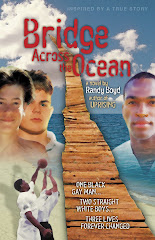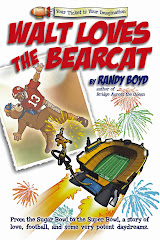 Half a lifetime ago, in a whole other galaxy known as college, I was a two-sport participant for four of my five years. I gave my all on the football field and basketball court every single game; I worked my ass off in practice, and made a concerted effort (most of the time) to be a model student, all for two different major universities. Two crosstown rivals, in fact. Perhaps you've heard of them, USC and UCLA?
Half a lifetime ago, in a whole other galaxy known as college, I was a two-sport participant for four of my five years. I gave my all on the football field and basketball court every single game; I worked my ass off in practice, and made a concerted effort (most of the time) to be a model student, all for two different major universities. Two crosstown rivals, in fact. Perhaps you've heard of them, USC and UCLA?What positions did my 6'3”, 200 pound black ass play? Cheerleader.
That's right. I was a cheerleader for both USC (1980-82) and UCLA (1983-85). As far as I know, it's a distinction held only by myself and the late great Lindley Bothwell, the longtime Trojan Yell God of the 20th century. Yep, that's me on the sideline when Marcus Allen of USC romps away with the Heisman. That's me again on the baseline when Reggie Miller of UCLA wins the NIT in New York. That little black head you see is me, a cheerleader who was constantly mistaken for a football or basketball player, even when surrounded by the other members of the (mostly-white) cheerleading squad. If I had a buck for each time a stranger assumed I was on the team, only to laugh in my face after learning I was a cheerleader, I'd be one very rich black ex-cheerleader.
 How I became interested in cheerleading is a story I recreated for my novel, Walt Loves the Bearcat, the tale of a lifelong romance between a college cheerleader and quarterback who becomes the first out superstar athlete. The Bearcat—that's the cheerleader, he's telling his buddy about the day he became fascinated—we've got a clip? Cool. Roll clip ...
How I became interested in cheerleading is a story I recreated for my novel, Walt Loves the Bearcat, the tale of a lifelong romance between a college cheerleader and quarterback who becomes the first out superstar athlete. The Bearcat—that's the cheerleader, he's telling his buddy about the day he became fascinated—we've got a clip? Cool. Roll clip ...Ah, what a sweet clip. Well, anyway, the seed was planted, and since I was the youngest kid in a sports family, I had plenty of chances to watch cheerleaders. But in a black family in 1970s Indianapolis, a young black boy dreaming of being a cheerleader was not a dream well received. It was more—we have another clip? What a coincidence, roll it!“You know how I first became interested in cheerleading?” asked Bear. “I was seven. My parents wanted to get us out of the inner city to a better school system, so they moved us here. On the day of the move, the rest of the family left me and my sister here to wait for a delivery. My sister was 12 and excited about junior high cheerleader tryouts. We were right here in this empty room in this empty house for hours. She taught me the cheers she was learning at tryouts. That’s all I needed. An empty space, my sister’s dream, my sister and me. From that moment on, I became conscious of cheerleaders at every sporting event. Cut to me now, back where it all started.”
“So I have your sister to thank,” said Walter. “If she hadn’t shared her dream, you might have never become mine.”
So I was primed for college cheerleading, right? Wrong! In college, I had to learn a whole new technique: cheering like a man (pause for laughter). Roll clip!Bear Coleman’s cheerleader dream had been born in his formative years, and had seeped out around his family and caused countless hours of commotion. As a young boy, he would watch sporting events on TV, and during appropriate moments, including timeouts, he would cheer because that’s what cheerleaders did. His two basketball brothers, both older, gave him hell for it until he put the dream back in the bottle of his imagination, knowing he would uncork that bottle at a big-time school someday.
By college, cheerleading was as natural to Bear as sitting at home and watching a sporting event. Now, unlike his brothers, he had been involved in big-time games between big-time schools; he had traveled the country; and most importantly to everyone back home, all it took was a half-second shot of his small Afro on national TV for the Coleman phone to start ringing as if Bear had just appeared on The Tonight Show Starring Johnny Carson. Bear’s dream had come true after all, and the whole family was feeling better about the harassment they’d subjected him to for all those years, all those years ago. Now, even his brothers possessed a certain amount of admiration and respect, if not pride, for the youngest Coleman. Upon further reveal, Bear had won that particular civil war. Despite their early attempts to crush his dream, he had become what the family used to deride him for pretending to be: a cheerleader.
In college, cheering was about representing the university and doing right by the teams. To get the drunken frat boys to cheer, I decided to be a man about it. And I loved being a man about it. Roll clip ...Of course, as a young cub, Bear had always pretended to be a female cheerleader. More precisely, a cheerleader who did the things female cheerleaders did. Those were the only cheerleaders Bear ever saw as a child. But for Bear, it wasn’t about being a female. It was about being able to feel comfortable in his skin. He couldn’t impersonate great athletes, whose greatness comes from spontaneous creations on the fly. Bear’s body didn’t work that way, for the most part. The cheerleaders, however, offered an alternative for his physical spirit. Their movements were playful, exuberant creations that were repeated over and over, game after game. He could learn the routines. He could rehearse. He could mimic. He could still run free on the very same basketball courts and football fields where he was a clumsy player never afforded the spotlight.
In his own world at home, when he was alone, Bear cheered and it didn’t matter how clumsy he looked. His head was up high, proudly commanding an imaginary crowd that gave him the perfect response every single time while watching the games he loved. On top of that, athletes valued cheerleaders, the team’s vital link to the in-game fuel reserve that was the crowd. It was a perfect match, and a way for Bear to be a shining star.
As much as I enjoyed expressing my spirit through spirit leading, I now understand my desire was about more than cheerleading. It was about moving with freedom through that which most resembles dance. The little boy within wanted to learn how to move in all kinds of magical ways: jazz, tap, ballet, ballroom, swing, contemporary, African, and so on. And the desire went beyond the many forms of dance. I wanted to learn gymnastics, surfing, diving, skateboarding, anything my body could dream up. But those were not options for a little black boy growing up in a sports family in 1970s Indianapolis.Bear clapped along to “Sons of Westwood,” his aura juuuuuust this side of robotic and demonstratively masculine. Being a college cheerleader wasn’t about censoring the feminine cheerleader from his boyhood. It was about setting free the masculine cheerleader within his manhood. It was about being a participant, not a spectator, a leader, not a follower. And yet he felt the same exact joy he had felt as a child, dancing in the imaginary stadiums of his youth.
 So even though I thought I could dance and find fulfillment, I didn't dare tell the world. As it was, I put the cheerleader dream on hold until age 18, when I could pursue it 2,000 miles away from home in secret. (It was only after I made my first yell leading squad that I informed my family I was interested in college cheerleading.) Imagine a big-ass, athlete-looking black boy like me with dancing aspirations. At least cheerleading was related to sports, and I did love sports. Still, being a cheerleader was challenging. As the Bearcat puts it, “at some point in time, at least 110% of the population will question your sexuality based on the fact that you once were and always will be: a male cheerleader.”
So even though I thought I could dance and find fulfillment, I didn't dare tell the world. As it was, I put the cheerleader dream on hold until age 18, when I could pursue it 2,000 miles away from home in secret. (It was only after I made my first yell leading squad that I informed my family I was interested in college cheerleading.) Imagine a big-ass, athlete-looking black boy like me with dancing aspirations. At least cheerleading was related to sports, and I did love sports. Still, being a cheerleader was challenging. As the Bearcat puts it, “at some point in time, at least 110% of the population will question your sexuality based on the fact that you once were and always will be: a male cheerleader.”Fortunately, the world has evolved to the point where kids of all races can follow their dancing dreams on television shows like So You Think You Can Dance and Randy Jackson Presents America's Best Dance Crew. Oh, to have been able to look at television as a kid and say, “Mama, I wanna learn how to dance like that!” and not feel as if I were putting my life at risk. To look at television nowadays and see two black street dancers (Joshua Allen and Twitch) battling for supremacy on So You Think You Can Dance. To witness the ethnic diversity on Dance Crew, where “masculine” dudes and “feminine” dudes dance side by side with abandonment. Oh, to have been part of a group like Fanny Pack, the eclectic wonders of Dance Crew.
 We've come so far in such a short time: men can now dance without cultural implications about their personal life. Of course, we all haven't evolved on the same scale at the same pace. Both Joshua and Twitch spoke of resistance to their ambitions, but they danced on, becoming inspirations for countless boys who want the same freedom to dance without implication and character assassination.
We've come so far in such a short time: men can now dance without cultural implications about their personal life. Of course, we all haven't evolved on the same scale at the same pace. Both Joshua and Twitch spoke of resistance to their ambitions, but they danced on, becoming inspirations for countless boys who want the same freedom to dance without implication and character assassination.One could argue that the 1970s gave birth to the “sensitive” modern man. During that hazy decade, it became acceptable for athletes and “all lesser men” to concern themselves with looking good with the assist of shampoo, hair-care products, cologne, aftershave and so on. Madison Avenue said men could de-cave and men followed. Since the 70s, buying grooming products doesn't make you a fag; it just makes you a consumer. Today, thanks to a shift in the cultural winds, dancing doesn't make you a fag either!
Now, if we could just work on cheerleading ...
- Randy Boyd is the author of Walt Loves the Bearcat, the epic sports novel featuring the first out superstar athlete. A Lambda Literary Award Finalist for Best Romance, Walt Loves the Bearcat is available wherever books are sold.















